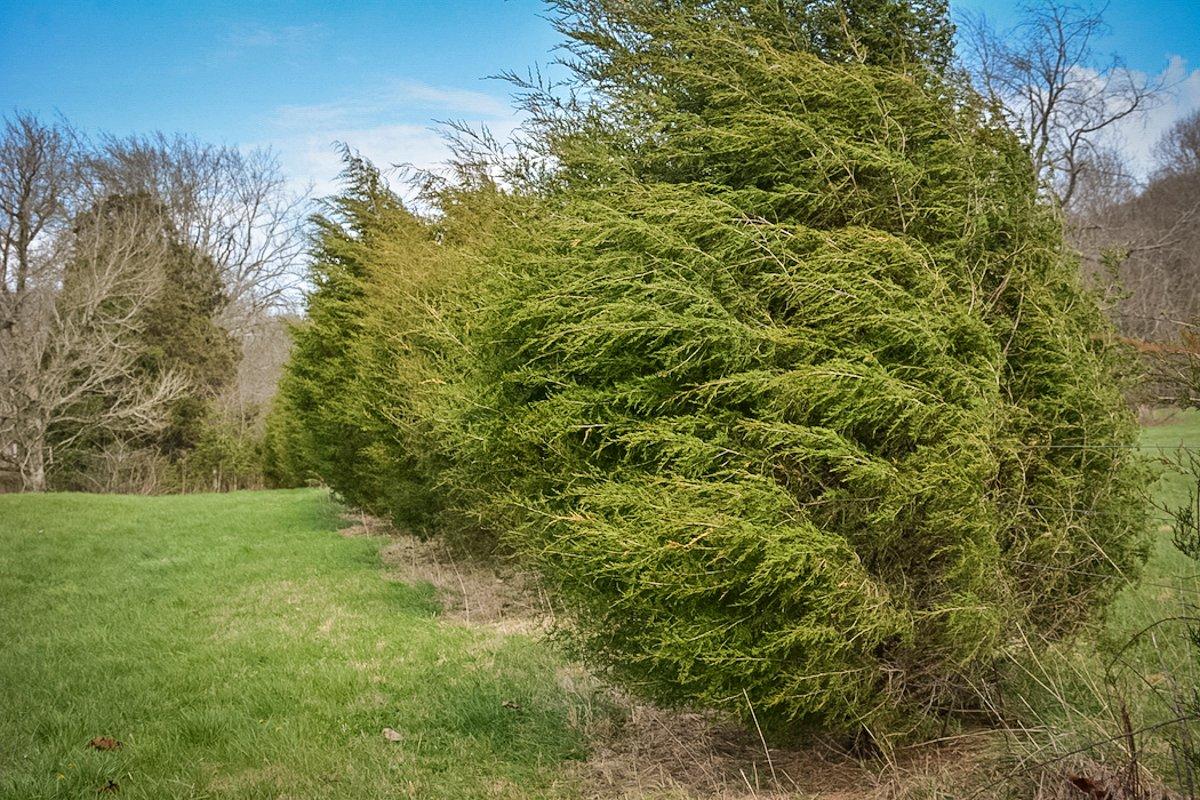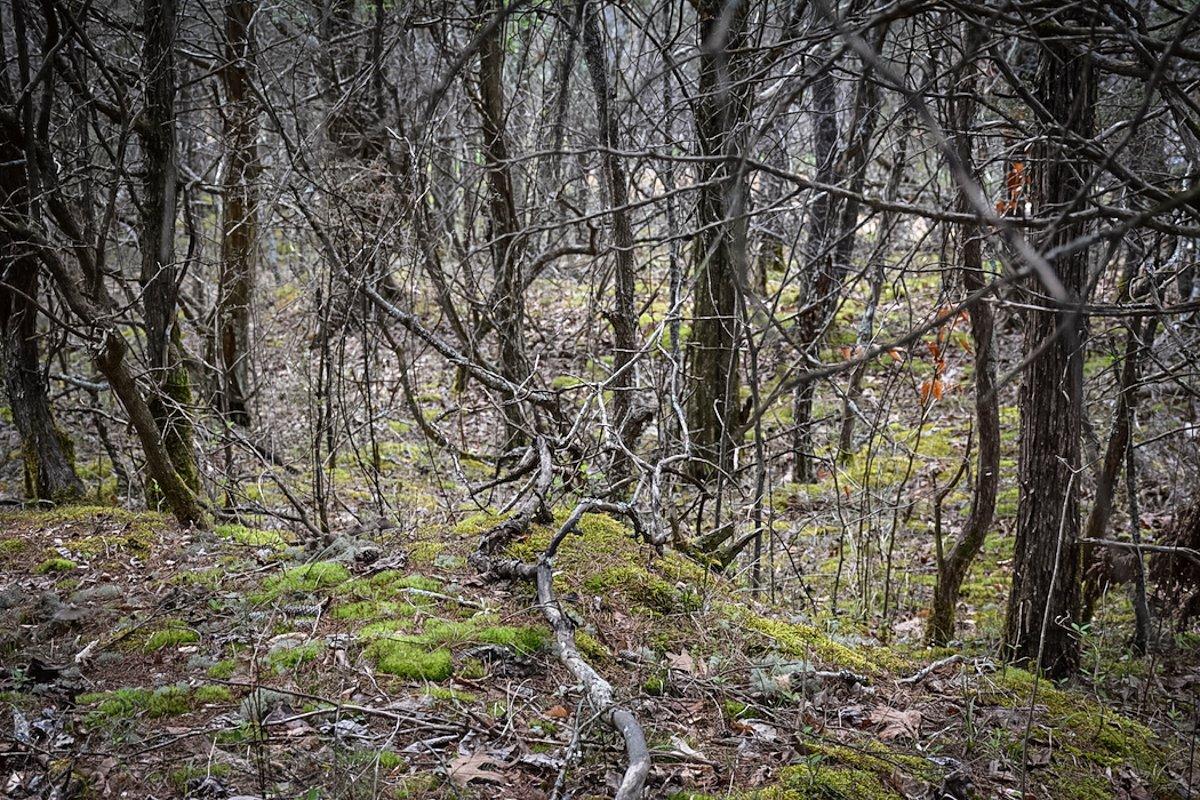Eastern red cedars provide thermal cover but can quickly overtake a farm if left unmanaged. A career forester explains
Many deer hunters wonder about eastern red cedars. Do they make wildlife habitat better or worse? Across much of the eastern United States, there are massive stands of them. Do you leave those, or cut them down? Here's what to know.
A Case for Red Cedars
Cedars can be assets to your deer herd and forest health. More than 70 species of birds and mammals, large and small, use cedars at some point for nesting, escape cover and food. As land managers, it's important that you determine how many to maintain to fulfill the seasonal habitat requirements of your herd.
First and foremost, cedars provide excellent thermal cover. They also serve as windbreaks, which is a plus for severe winter weather. If faced with choosing which cedar thicket to maintain, keep those that are on south- or southwest-facing slopes. Deer are attracted to these sites in the winter, and cedars sustain themselves on the consistently drier soils found on south slopes.
Deer generally bed on the leeward side of cedar trees, but do so several feet from the base. Wind is directed over and around the tree, creating a space with less wind force. If maintaining cedars as windbreaks, it's important to understand the wind-evergreen relationship. The best cedar stands are thick. Scattered trees permit more wind to pass through.
Thicker is obviously better. As a cedar stand ages, lower limbs begin to drop off, though, which allows wind to penetrate the stand. In making management decisions, stand back and look at the edge of your cedar thicket. Cedars should cover at least 60% of the wood line edge for acceptable wind reduction. Total acreage of the thicket isn't as important. That said, larger areas do create more bedding cover, which holds more deer, and subsequently, more mature bucks.
Cedar Science: The red cedar is a pioneer species, which means it's generally the first tree to establish in a new area.
Why Red Cedars Suck (Literally)
You can have too much of a good thing, and in places there are reasons to adopt a scorched earth policy toward every red cedar on the farm. First, excessive populations of cedars limit valuable browse and mast production. If you have cedar scattered throughout hardwoods, take them out so they don't compete with valuable trees and shrubs. Whitetails will eat red cedar if nothing else is available, but they can barely sustain themselves on it. If they're eating it at all, it's an indicator of poor habitat.
Water is of concern, too. A red cedar thicket with a closed canopy is capable of capturing, holding and transpiring (evaporation through leaves) an entire year's normal annual rainfall. The result? No rain reaches nearby streams. No precipitation transfers to groundwater.
In the East — where rainfall commonly exceeds 50 inches per year — this is not necessarily an issue. However, on the Great Plains — where annual rainfall may only be a few inches — this can have disastrous effects on grass and forb production. The red-cedar invasion is occurring at an exponential rate, and Oklahoma is ground zero. In 1950, cedars covered 1.5 million acres there. By 1985, that number increased to 3.5 million acres. In 2002, it was 8 million acres. Today, in Oklahoma, cedar acreage increases at 762 acres per day. That's unacceptable.
Cedar Science: The red cedar is an allelopathic plant. It secretes toxins into soil that restrict competing plants.
What's the Answer?
Keep red cedars in moderation. If thermal cover is lacking, select one or two (small) permanent patches. Step back and let them grow, but don't let them spread. If you have large, 50-plus-acre stands of red cedars, start with a 50% removal, and then evaluate for a year.
There are uses for cedar logs including fence posts, lumber and brush-pile bedding. Bill Lagermann owns a 275-acre farm near Edmonton, Kentucky, and was Kentucky's 2018 Tree Farmer of the Year. He's been systematically removing cedars for several years.
All of our cedar cutting has been focused on improving deer and turkey habitat, Lagermann says. Smaller-diameter trees are pushed into brush piles for small-game cover. Some are piled along boundary lines to create visual barriers. Still, others are used for creating deer beds.
If the trees on your place are too small for sawing, consider clearing them quickly. Many areas have mulching contractors that can clear and shred trees by the acre, depending on their diameter.
Like most things in wildlife management, knowing how many cedars to keep depends on knowing the pros and cons of the tree relative to your management objectives. Like many things, moderation is key.
Cedar Science: The red cedar is an evergreen, which means it's capable of growing year-round, and growth can occur anytime the temperature are above 40⁰F.
Don't Miss: How to Kill Invasive Trees
Check out more stories, videos and educational how-to's on land management.










